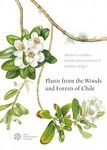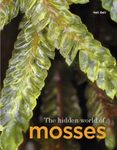World / Checklist Flora / Fauna Identification Key
By: Roy Watling(Author), Evelyn Turnbull(Author)
189 pages, 7 plates with 134 b/w line drawings
![British Fungus Flora, Part 8: Cantharellaceae, Gomphaceae Amyloid-spored and Xeruloid Members of Tricholomataceae (excluding Mycena) British Fungus Flora, Part 8: Cantharellaceae, Gomphaceae Amyloid-spored and Xeruloid Members of Tricholomataceae (excluding Mycena)]()
Click to have a closer look
About this book
Customer reviews
Related titles
About this book
From the introduction:
"The genera covered in this part include the chanterelles, the ‘Horn of Plenty’ and their relatives, those with amyloid spores, excluding the genus Mycena, those with spores becoming blue-black or grey-blue in Melzer’s reagent (amyloid) and those tricholomataceous agarics with xeruloid characters [...] Fourteen genera are included in the xeruloid group; such genera as Oudemansiella and Megacollybia, whose species were previously placed in Collybia, Armillaria etc., are all brought together by a rather distinct type of hyphal structure termed sarcomitic (Redhead, 1987). [...] Nearly 50 British species can be conveniently placed within this category. Four genera in this group are in addition characterized by amyloid spores. These are included in the group which covers agarics with white or pale cream-coloured spore-prints with gill attachment either decurrent (clitocybioid and omphalinoid), adnate with delicate cap (mycenoid) or sinuate (tricholomatoid). Where genera are found with some members which lack amyloid spores, e.g. Cystoderma and Dermoloma, all known British taxa are included for completion.
The amyloid-spored group of Tricholomataceae includes Singer’s tribe Leucopaxilleae except Dermoloma and Fayodia which that author placed in tribe Myceneae, and Panellus in the Panelleae. He referred Cystoderma to the Agaricaceae. It and Dermoloma are currently placed in the Tricholomataceae with a recent move to associate Dermoloma with Hygrocybe.
One member of the genus Porpoloma was referred to Hygrocybe (as Hygrophorus sg. Hygrocybe) in the New Check List, whereas the others can be found in Tricholoma although its members lack amyloid spores. Pseudoclitocybe and Pseudomphalina will be found in the New Check List in a much expanded Cantharellula. Mycena also had a wide and now unacceptable circumscription and included species which are discussed herein in Delicatula, Hemimycena, Hydropus, Mycenella and Resinomycena. Members of the genus Melanoleuca are very poorly known and the key and descriptions offer only a preliminary treatment to aid and, it is hoped, encourage further work.
The third group, in addition to being rather distantly related to the true agarics, is also rather artificial including all the old classical species of Cantharellus. The pleurotoid members were dealt with in Part 6, being more referrable to the Tricholomataceae; the rest will be found herein. However, even then the species cover two groups of unrelated members: the true chanterelle and its relatives and the ‘Pig’s Ear’ fungus, Gomphus, which has more in common with a group of coralloid fungi – Ramaria. Comer (1950, 1966) should be
consulted further on these studies.
Mycena acicula and its close relatives were discussed by Comer in the 1966 work as being species of Trogia. The fungus is maintained in our studies in Mycena although we continue to emphasize the importance of the sarcomitic structure.
Gerronema is part of Omphalina in the New Check List, Xerula part of Oudemansiella and Megacollybia part of Tricholomopsis. Strobilurus replaces Pseudohiatula for British species because the type of the latter genus does not agree microscopically with our common cone-inhabiting taxa. The changes which are here adopted are not new but have evolved significantly over the years as more and more tricholomataceous fungi have been examined in detail under the microscope. It is surprising to find that fungi which have been classified together for so long frequently have such different anatomy, one wonders why it was ‘as it was’. A zoologist would never have tolerated the situation as much of their taxonomy is based on structure. So should ours!"
Customer Reviews
World / Checklist Flora / Fauna Identification Key
By: Roy Watling(Author), Evelyn Turnbull(Author)
189 pages, 7 plates with 134 b/w line drawings







































